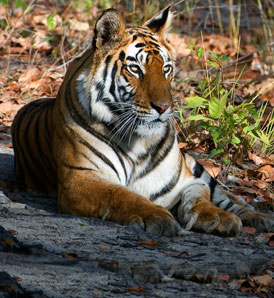About Jim Corbett National Park Safari Gate, Safari Timings & Safari Charges. Best Website for Jim Corbett National Park Online Booking Rest House & Jeep Safari.
About Jim Corbett National Park
Jim Corbett National Park is a Project Tiger Reserve situated in the Nainital, Uttarakhand. It was established in 1936 as Hailey National Park. It is the oldest National Park of India. It is also famous as the first Project Tiger was first launched here in the year 1973. This National Park is a home to more than 650 endangered species of birds and other animals, elephants and four to five species of deer.
It covers an area of about 520 square kilometers, comprising of hills, marshy land, large lake, riverine belts and grasslands. Jim Corbett National Park allows overnight stays to its visitors. To move around within the National Park for watching nature and wildlife, take on a Jeep Safari or an elephant Safari.
In Dikhala (situated at the border of Patli Dun valley, in Corbett having abundance of wildlife) you will find varied species of Birds & animals and more than 50 species of raptors (birds of prey like hawks, eagles, kites, vultures etc.). As a result, it is considered as the healthy biodiversity of the area.
Jim Corbett - Biography
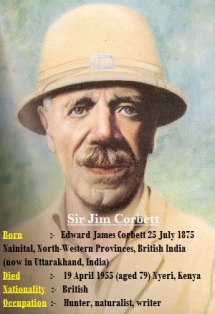
The fable of Edward Jim Corbett is still persisting in the minds and hearts of the people of Garhwal and Kumaon. People all over the world know Jim Corbett from his fabulous writings as a famous hunter who later became the adversary of many notorious man-eaters. There are four biographies on him and three films on his life that displays the lucid accounts of his exploits that he has given in his books.
Edward James Corbett was born 25th July 1875 of English ancestry in Nainital districts of Uttarakhand. He grew up spending much of his childhood exploring the wilderness that exists around. Jim Corbett lived his life amidst dense jungle and developed a deep knowledge of the way. Sir Jim Corbett spent his major part of his life at Gurney House (located in Nainital) with his large family, his mother Mary Jane Corbett and his sister Margaret Winfred Corbett, fondly called Maggie. His father, who was postmaster in Nainital died when Jim Corbett was four. The whole responsibility fell to Corbett's mother to raise and educate 12 children on a widow's meager pension. Soon after an early age Jim Corbett has to face with the responsibility of supporting his family of six members so he took up a job with the railways.
Over the years he became a good hunter as well as wonderful naturalist. He was blessed with the excellent observation, fleet- footed and great stamina. He was so intelligent and active that he could read the signs of the forest and movement of wildlife as put all senses on (sight, hearing and smelling) while moving in the forests. He has a record of killing 19 tigers and 14 leopards. He was also a pioneer conservationist and played a key role in the establishment of present Jim Corbett National Park. He led a confirmed bachelor life and remained an active member of many wildlife preservation organizations and helped in conserving these natural resources.
Flora of Jim Corbett National Park
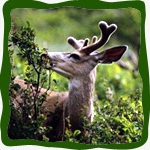
Jim Corbett National Park is also enriched with flora. Sal forests cover more than 75% of the total area of the park. It has 600 species of plants including grass, ferns, climbers, herbs, shrubs, trees and bamboos.
Sal, Khair, Sissoo and the only conifer called Chir Pine are found in Corbett. Male Bamboo (Dendrocalamus strictus) can be seen in abundance. Flowering plants like Kachnar (Bauhinia Variegata), Semal (Bombax ceiba), Dhak, Madaar or Indian Coral (Erythrinia indica) and Amaltas (Cassia fistula) along with artificially planted trees likeTeak (Tectona grandis), Silver Oak (Gravillea robusta), Eucalyptus, Jacaranda (Jacaranda mimosaefolia) and Bottlebrush (Callistemon viminalis), and can be seen in and around the forest area of Corbett Tiger Reserve. Shrubs like Ber (Zizyphus), Maror Phali (Helicteres isora) and Jhau are also found in Corbett.
Fauna of Jim Corbett National Park
The Fauna of Jim Corbett National Park includes a huge list of animals besides Royal Bengal Tigers and Asiatic elephant, which are Asiatic Black Bear, Sloth Bear, Walking Deer, Hog Deer, Sambar, Yellow-throated Marten, Otters and Ghariyal along with aqua fauna such as Golden Oriole, Pallas Fish Eagle, Indian Pitta, Tawny Fish Owl, Scarlet Minivet and species of birds like the Great Pied or hornbill, Orange Breasted Green Pigeon, Hodgson's Bushchat, White-Backed Vulture, and reptile like Ghariyal or Aligator, Mugger or Crocodiles and the King Cobra.
Wildlife Safari In Jim Corbett National Park
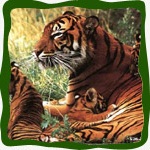
Jim Corbett National Park offers unmatched options like jeep safari, elephant safari and canter safari for the tourists to begin their adventure wildlife trip into the forest.
1. Elephant Safari : Having a trip on an elephant’s back is fashionable and of great fun. The elephant safari starts at Durgadevi gate (north-eastern border) of the reserve and completes at Halduparao (north-western boundary). The charge of elephant safari for Indian is INR 500 / Person and for Foreigner it is INR 1500 / Person. One elephant is allowed to carry only 4 Persons at a time. It covers the Bijrani area. You can take an elephant ride from 6:30 AM - 10:00 AM in the Morning and from 1:30 PM - 5:30 PM in the Afternoon.
2. Jeep Safari : Discover the wilderness and varied species of flora & fauna of Jim Corbett National Park through jeep safari. It is the fast and comfortable mode to explore this area. The charge of jeep safari for Indian is INR 7500 / Jeep and for Foreigner, it is INR 7000 / Jeep. Only 6 persons are allowed in a single Jeep. It covers zones like Bijrani, Sitabani and Jhirna. For Durgadevi the charge differs it is INR 7200 / Jeep. Jeep safari can be enjoyed from 5:30 AM - 9:00 AM in the morning and 3:30 PM - 7:00 PM in the evening.
3. Canter Safari : If you want to explore Dhikala forest or staying in a resort, center safari is the only option. There are two canter safari services in a day- one is from 0600 Hrs (sunrise time) and the other at 1200 Hrs (afternoon). The 05 Hrs extensive ride through canter safari will give immense pleasure.
The charge of canter safari for Indian is INR 1500 / Person and for Foreigner it is INR 3500 / Person. The canter has 16 seats and covers Dhikala. Canter safari can be enjoyed from 6:00 AM - 11:30 AM in the morning and from 12:00 PM - 5:30 PM in the Afternoon.
Safari Timings

- Park Entry : 06:30 hours to 17:30 hours. (timing flexible as per season)
- Jeep Safaris : 06:30 hours to 09:30 hours and 13:30 hours to 17:30 hours.(timing flexible as per season)
Climate of Jim Corbett National Park
The weather remains moderate here with a varying temperature of 5°C to 30°C during the winter and rise up to 40°C during summer. Winter mornings are foggy. Monsoons receive heavy rainfall in Corbett.
Climate : The weather remains moderate here with a varying temperature of 5°C to 30°C during the winter and rise up to 40°C during summer. Winter mornings are foggy. Monsoons receive heavy rainfall in Corbett.
Best Time to Visit Jim Corbett National Park
Spanned over beautiful areas of Pauri Garhwal, Almora and Nainital of Uttarakhand state in India, Jim Corbett National Park is a large and appealing site and is amongst the oldest parks in India. This park is mainly recognised for Project Tiger which is a project on India's endangered Bengal tiger. So, it is not just a park, but a big and renowned tiger reserve as well which covers an area of 1318.54 sq.km in which 520 sq. km is the main area and remaining part is buffer area. The park is named after Col. Jim Corbett since 1956.
So, the visit to Jim Corbett National Park is truly memorable and unforgettable. It remains open from the mid of November to the mid of June months. However, there is a Jhirna zone in the park that remains open for whole year long. The famous Birjani zone of this park welcomes the visitors from mid of October to mid of June months and Dhikala zone allows visitors to visit inside from November 15 to mid of June. During monsoon period, the road of Dhikala and Birjani zones get completely washed away. Moreover, after the sunset, the gates of the park get closed and no drive out is allowed that time.
Right Season to Plan Your Visit to Jim Corbett National Park
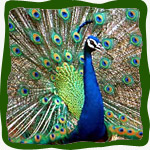
Winter Season - Within October to February In winter season or a period of October to February, you will find this park a true abode of beautiful and unseen birds. So, for birding, this is the most captivating period as at this time, you will meet unseen variety of birds there. Besides birds, you can sight majestic Bengal tiger roaming around the park in the winter season. So, there are high chances to have a natural sight of endangered tiger then. Mostly at night, the temperature of this park goes down to 5 degree Celsius. However, the day time is quite balmy and pleasant. In the day time, animals come out for lazing around in sun; so you can spot them easily there.
Monsoon - During July to September Months Though the monsoon season is not that appealing time for visitors to come over Jim Corbett National Park, yet we suggest you to visit during this time if you do not prefer visiting this site in crowd. In this season, mostly the crowd gets declined. So, we must say that it is an ideal season to have amazing trekking experience. At that time, the overall weather has an appealing aura as the temperature drops. It is said that in rainy season, the animals enjoy their mating time. So, tourists can get experience of this moment as well. Though we should not forget to mention that visiting this season accompanies a great risk of landslides and soil erosion. Hence, it can be a little risky also. But the beauty will be at its peak with exotic greenery and amazing vegetation around.
Summer Season - During March to June Months The time from March to mid of June is called summer season in India. During the summer season, the temperature remains quite high. In day time, the weather becomes too hot and scorching that may go up to 40 degree c. So, in this time, the animals and other inhabitants of the park suffer from the extreme heat of sun.
This season is called to be the best visiting season as it allows visitors to get the most of the animals inhabiting in the park. Come during this season here and enjoy river rafting and have an unforgettable meet with endangered animals and bird species closely.
How to Reach Jim Corbett National Park

Ramnagar is a small city, near the Jim Corbett National Park which can be easily accessed through road and rail network from all the major cities of India such as Delhi, Nainital, Moradabad and Bareilly. You can reach the National Park in only half an hour as it is situated at a distance of 15 km from Ramnagar railway station.
Roadways : Ramnagar connects the major cities of India with its amazing road network. As Jim Corbett National Park is situated at a distance of 260 Kilometer from the capital of India, Delhi that is why several buses are operated by the state government of Uttarakhand to connect Delhi, Nainital, Haldawani and Moradabad.
Railways : Ramnagar Railway Station has access to trains from various cities of India like Delhi, Bareilly and Moradabad. There are direct trains from Delhi to Ramnagar which includes Corbett Link Express, Ranikhet Express and Kathgodam Express.
Distance between the Major Cities and Jim Corbett National Park
- Delhi - Ramnagar (260 Km)
- Nainital- Ramnagar (62 Km)
- Lucknow- Ramnagar (436 Km)
- Dehradun- Ramnagar (232 Km)
Best Places to Stay in Jim Corbett National Park
- Dhikala Tourism Zone
- Dhela Tourism Zone
- Jhirna Tourism Zone
- Bijrani Tourism Zone
- Sonanadi Wildlife Tourism Zone
Incidents Occurred in Jim Corbett National Park

Here are some incidents that occurred in Jim Corbett National Park which will surprise you.
- In the year 2005, an associate of KMVN restaurant of the Dhikala tourist complex was attacked by a tigress. He is undergoing treatment in a hospital at Delhi. As a safety measure the complex has been surrounded with electric fence.
- In 2001, Deputy Ranger Mr. Bipin Chandra Pandey and 5 elephants were killed by the poachers.
- In 1988, a tigress entered the room of mahout Sher Bahadur and attacked him. He was saved by the wildlife warden Brijender Singh.
- In February 1985, a tiger killed British ornithologist David Hunt, who was studying wildlife of India in Jim Corbett National Park.
- I982 is marked with the killing of a fodder cutter by a tiger.
- Three people were killed by a red eared tusker in the year 1980, which was later killed by shooting 10 bullets.
- On Dhangarhi and Ramnagar road, an elephant was found dead in the year 1979.
- Two forest staff were attacked by four bears along with two cubs in the year 1978.
- In between 1973 – 1977 a wild boar called Buddhu fell ill and died.
- Five elephants were killed in Paterpani as they came into contact with live wires in between 1974-75.
- In the year 1974 a male elephant called Makhana died of electrocution. Asia's largest multi-purpose dam was built across Ramganga River. Swamp deer became extinct during the same period. The population of hog deer and spotted deer along with porcupines got affected because of overwhelming abundance of grasslands. Also a large number of Chital died as they moved to some higher places.
- An elephant and a young cow died due to electrocution as they came in contact with live wire in the year 1973.
- A tusker got electrocuted in the year 1971 and died.
History of Jim Corbett National Park
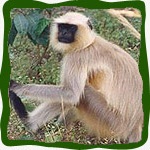
Jim Corbett National Park area originally belonged to the Kings of Tehri Garhwal. It was their private property before conversion. Garhwal was captured by the Gorkhas in 1804 and was ruled by them for twelve years. But the Gorkhas were driven out by the British in 1920. The British used this forest for timbers. Teak was also grown in the forest. Now the National Park preserves endangered species of Indian Wildlife.
The Park and its surroundings were famous for the exotic wildlife and scenic beauty several years ago. In the 19th century, under the guidance of Major Ramsay, the project to save the famous regions of the forests started. This British officer was appointed as the In-charge of that area during that particular time. The first step to preserve this area was taken in the year 1868. These forests were converted into Reserved Forest Area in 1879 and only limited felling was permitted.
In the earlier part of 1900, the ideation behind the setting up of a National Park was suggested by the British like E.R. Stevans and E.A. Smythies. Therefore, in 1907 the British Administration took initiative for establishing an entertainment reserve. Under the supervision of Sir Edward Jim Corbett, the process of separating the well known areas started in the year 1930, as he was familiar with the place.
In 1935, under the governor of the province, Sir Macolm Hailey, the act of National Park came into effect. It was the first National Park in Asia and was formerly known as Hailey National Park. After the independence, during the period of 1952 to 1957, the park was named as Ramganga National Park. It was again renamed as Jim Corbett National Park as a tribute to Sir Edward Jim Corbett, in the year 1956. Hunting was forbidden in the area and permission was granted for cutting of timbers for domestic use only.
The year 1973 added another golden day in the history of Corbett when Jim Corbett National Park became India's first Tiger Reserve and was regarded as the launch pad for protecting tigers in India.
Generally people think this site official website of Corbett tiger reserve. But, it is not true, This site belongs to such an individuals who deal in online booking for jim Jim corbett national park jeep safari, online dhikala canter safari booking, online dhikala tour packages booking, online corbett forest rest house booking, online hotel & resorts booking. We are bound to follow the same rules and regulations which are directed by the Corbett Tiger Reserve and Uttarakhand Government. The source of the data and information relating to jimcorbettnationalpark.co.in is The Official Website of Jim Corbett National Park or Corbett Tiger Reserve Ramnagar Uttarakhand India.
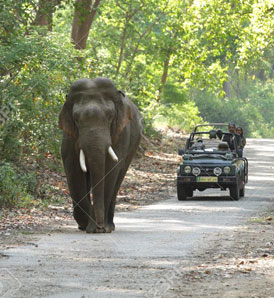
Corbett Wildlife Safari
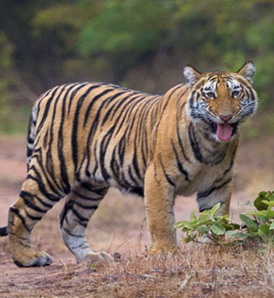
Travel Information Corbett
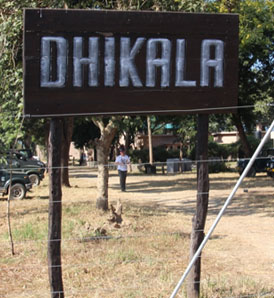
Accommodation in Dhikala
- Dhikala forest lodge has two wings old and new and both offers rooms as well as dormitory accommodation.
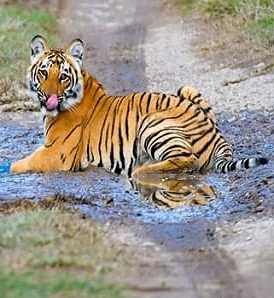
Bijrani + Dhikala Tour
jimcorbettnationalpark.co.in offer various tour packages for Corbett Tiger Reserve. Booking Online Corbett Government Forest Rest House Tour Packages in Corbett Tiger Reserve.
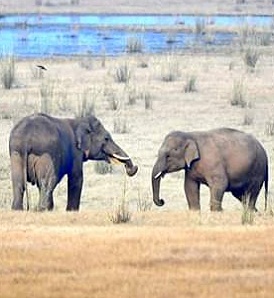
2 Night Gairal+Dhikala Tour
jimcorbettnationalpark.co.in offer various tour packages for Corbett Tiger Reserve. Booking Online Corbett Government Forest Rest House Tour Packages in Corbett Tiger Reserve.
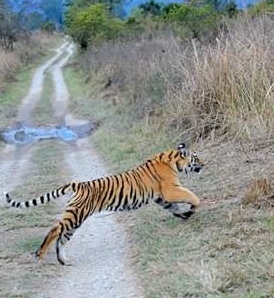
2 Night/3 Days Jhirna Tour
jimcorbettnationalpark.co.in offer various tour packages for Corbett Tiger Reserve. Booking Online Corbett Government Forest Rest House Tour Packages in Corbett Tiger Reserve.
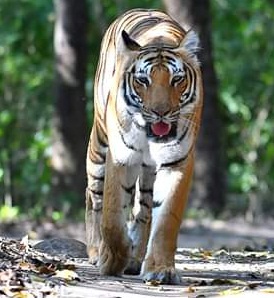
2 Night/3 Days Bijrani Tour
jimcorbettnationalpark.co.in offer various tour packages for Corbett Tiger Reserve. Booking Online Corbett Government Forest Rest House Tour Packages in Corbett Tiger Reserve.

